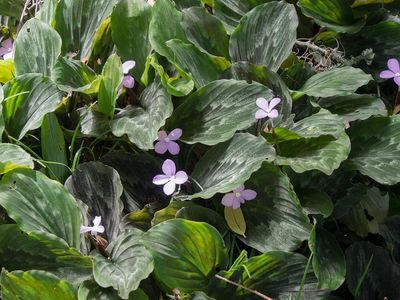What is Peacock Ginger?
Peacock ginger belongs to the Kaempferia genus and there are several species, all native to Asia. They are largely grown for the decorative foliage, although they also produce pretty little flowers, usually pale purple to pink. These are perennial, groundcover-type plants, most varieties growing no more than a foot (31 cm.) tall. The elaborately striped leaves of the peacock ginger give this plant its common name. The leaves are showy and attractive, growing between 4 and 10 inches (10-25 cm.) long depending on the variety. The leaves are elaborately patterned with purple, shades of green, and even silver. For their love of shade, pretty foliage, and ground covering duties, the peacock ginger is sometimes known as the hosta of the south. Peacock ginger plants should not be confused with the peacock plant. Common names can be confusing, but most plants you’ll see labeled as peacock plant are tall, tropical plants that are hardy only through zone 10 or 11. In most areas, it is used as a houseplant and will not survive outdoors. Several common varieties are found in nurseries in warm regions, including a taller variety called Grande. This peacock ginger can grow up to 2 feet (61 cm.) tall. Most are much shorter, though, like Silver Spot, with dark green and silver leaves, and Tropical Crocus, so named because its flowers emerge in the spring before the new leaves.
How to Grow Peacock Ginger
To grow peacock ginger, first find a good space for these shade-loving plants. Some varieties will thrive with more sun, but most prefer a nice shady spot. They will tolerate various types of soil, but they prefer a well-drained spot with rich soil. Plant your peacock gingers so that the rhizomes are about a half inch (1 cm.) below the soil. Water the plants until they are established and then only as needed. Your peacock ginger plants should grow readily, even out-competing weeds in a bed. They are not often troubled by pests or disease. Peacock ginger plant care is easy and trouble free. These shady groundcover plants can be mostly left alone, once established, and make for a simple and rewarding addition to your shaded beds where other plants struggle to grow.
